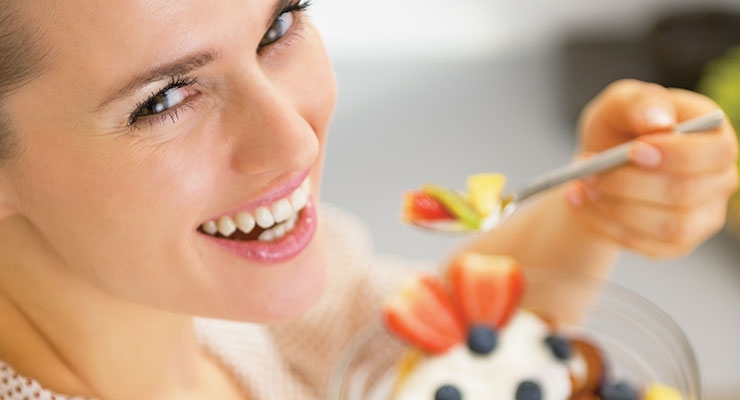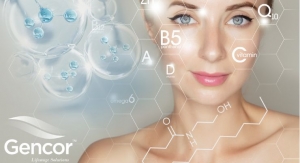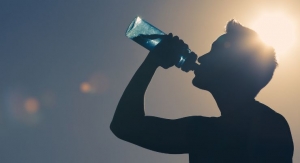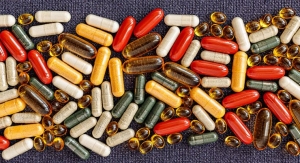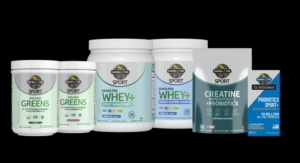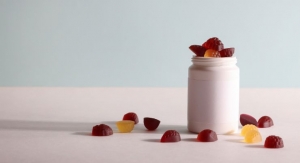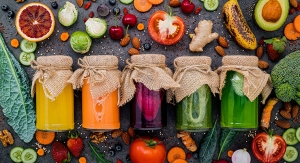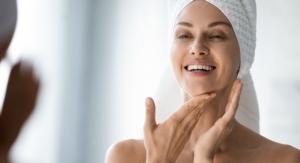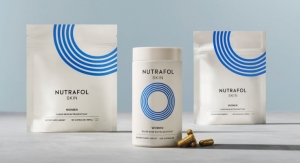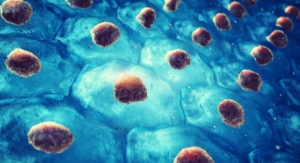Tom Branna, Editorial Director09.01.15
The idea of eating the proper foods to improve one’s health isn’t new; after all, “an apple a day, keeps the doctor away,” is probably the first advice that children get regarding the role that good nutrition plays in maintaining overall health. And a diet high in fiber, which just so happens to be found in apples, can help lower cholesterol, blood pressure and blood sugar levels. But what about the role that food ingredients play in maintaining skin health? There’s a growing body of evidence that antioxidants and other actives found in fruits and vegetables play an important role here as well. Cosmetic formulators are also tapping into the power of these ingredients to create novel skin care creams and lotions.
AGEs and Aging
“Accelerated aging needn’t be imminent,” noted industry expert Navin Geria, who is also a principal at Doctors Skin Prescription. “It can be prevented by eating diets low on the glycemic index (GI).”
Glycation is a non-enzymatic reaction between amino groups on proteins (lysine) and reducing sugars (fructose). This reaction creates crosslinks in the skin and once these reactions occur, they disrupt normal function and predispose skin to oxidation, resulting in premature aging in the extra cellular matrix of the dermis, according to researchers. Geria explained that as sugar breaks down and enters the bloodstream, it bonds to protein molecules including collagen and elastin. These bonds cause skin to become stiff, inflamed and less supple.
Geria noted that cells need sugar in order to function; however, when sugar levels rise abnormally in the blood it promotes glycation, resulting in damage to proteins. When there is over-production of advanced glycation end products (AGEs), collagen and elastin become compromised and both become abnormally clumped together, becoming rigid, and non-flexible. Glycation shows up on the skin as fine lines, wrinkles, discoloration, edema and sagging. This index compares the effects of different foods on blood sugar levels; consuming high GI foods results in high blood sugar levels in the blood, compared to low GI foods. Very low GI foods include most vegetables, with the exception of potatoes.
According to Dr. David McDaniel, an assistant professor at Old Dominion University, Norfolk, VA, antioxidants provide one of the best treatments for preventing or reducing free radical damage. Protection is also provided by consuming antioxidant-rich foods such as green tea, dark chocolate, berries, pomegranate, blueberries, beans, leafy greens and other fruits and vegetables. All of them play a powerful role in the body’s ability to repair itself, particularly the skin.
Don’t Say No … Say Yes!
Perhaps no skin care company is more closely allied to food than Yes To, Inc., the San Francisco, CA-based company that has created entire personal care collections built on good-for-you ingredients. For example, Yes To Carrots products are formulated for normal-to-dry skin and hair types. Yes To Cucumbers are formulated for sensitive skin types and color-treated hair. Yes To Tomatoes products are formulated for oily/combination skin types and fine/thin hair. And Yes To Blueberries products are formulated to fight the signs of aging.
BodyographySkin, which debuted in 2013, offers a daily cleanser that is infused with peppermint extract for a fresh, calm and cooling sensation. The mask also contains vitamins A, C and E and seaweed extract, which help to lock in moisture and protect against environmental stress and pollutants. Meanwhile, sugar cane offers a dose of glycolic acid using alpha hydroxy acids to battle the signs of aging while gently exfoliating skin.
BodyographySkin, which is owned by Robanda International, also markets a hydrating mask, which contains “age-defying” fruit and plant extracts that are rich in antioxidants like watermelon, green tea and apple fruit extract. These components give skin a healthy boost and beautiful natural glow, according to the company.
The benefits of food-based ingredients such as green tea and apple fruit extracts are well known. Watermelon (Citrullus lanatus), according to industry experts, is rich in vitamin C, amino acids and lycopene. It’s also said to promote cell regeneration, moisturize, cleanse and exfoliate. It has been found to improve the appearance of aged and stressed skin. Watermelon extract gives the look of a younger, regenerated skin and has been shown to reduce appearance of skin redness after UV irradiation, according to industry experts.
“We created a simple approach to skin care, offering nine easy to use and easy to understand products that tackle the main issues that trouble aging skin,” said Lori Leib, creative director of BodyographySkin and Bodyography Professional Cosmetics.
“BodyographySkin uses clean ingredients derived from both natural sources and scientifically proven actives to rehydrate, firm and brighten dull aging skin.”
Earlier this year, BodyographySkin introduced Overnight Serum, which is billed as an intense anti-aging treatment serum, which delivers a concentrated form of collagen amplifiers that work overnight to smooth fine lines and wrinkles. The serum contains a high percentage of bamboo and pea extract as well as glucosamine HCI that fight off free radicals, preventing new wrinkles from forming, and promote skin renewal.
According to industry experts, pea extract (Pisum sativum L.) keeps specific enzymes known as proteases from degrading skin proteins such as collagen and elastin, which are responsible for giving skin its firmness and elasticity. It is said to protect collagen and elastin against the damaging effects of proteases activated by aging and through different types of aggressors such as UV radiation. One clinical study found a significant improvement in skin elasticity (+16.7%) after just three weeks of treatment. When used nightly, according to the company, Overnight Serum will diminish the visual signs of aging and give skin the necessary elements to look revitalized after sleep.
Cuckoo for Coconut Milk?
Now, BodyographySkin is rolling out a coconut milk radiance lifting serum. Coconut milk, whether ingested or applied topically, is great for skin. It is rich in vitamins A and C, calcium, iron and natural proteins that contribute to smooth and radiant skin. The various benefits of coconut milk are as follows. It has applications as a moisturizer and sunburn treatment, and consumption or application of coconut milk improves skin elasticity due to its copper and vitamin C content. These nutrients slow down the aging process of the skin and body by maintaining flexibility and elasticity of skin and blood vessels. Thus, it prevents wrinkles, sagging skin and age spots, according to Ms. Leib.
Replere was founded in 2010 by Dermatologist Debbie Palmer, who is a big believer in the use of topical and oral antioxidants in skin care. One of Dr. Palmer’s newest products is Beauty Shooters, a revitalizing drink that reportedly brings powerful results to the skin with just one serving a day. Each Beauty Shooter contains enough antioxidants “to feed the body and skin from the inside” to protect against free radicals, according to the company.
Replere’s No. 1 product is a topical, antioxidant-rich night crème that is said to hydrate and repair skin damage during sleep. The formula moisturizes skin and repairs free radical damage while visibly reducing the appearance of fine lines and wrinkles. Redness is minimized and skin will reveal a more even tone and texture.
Dr. Palmer said Replere is the first antioxidant skin care line that targets the five free radicals that damage and age the skin: peroxyl, hydroxyl, peroxynitrite, superoxide anion and singlet oxygen. The products also tap into the power of coffee—specifically, Coffea arabica fruit.
“Coffea arabica (and coffee in general) is one of the most potent antioxidants,” Dr. Palmer insisted. “In fact, most people don’t know that coffee is the single most commonly consumed antioxidant and the number one source of antioxidants in the United States! To this day, the coffee fruit is often hand picked on coffee farms (as it has been done for over 1,000 years) and it is known by the farmers that the fruit is rejuvenating—and those who pick it have younger looking hands.”
Besides containing Coffea arabica, Replere formulations also feature pine bark, goji and acai berries, grape seed, pomegranate, green tea and vitamins A, C, and E. In fact, the formulas contain more than 70% antioxidants, said Dr. Palmer.
‘No Smoking’ Area
Free radical formation, inflammation and subsequent aging, isn’t only an inside job—air pollution impacts extrinsic aging and the skin in general. Primary skin problems include dehydration, redness, age spots, increased wrinkling, eczema and acne. When the body is regularly exposed to pollution, it results in an almost chronic state of sub-clinical inflammation, which leads to a variety of external signs on the surface of the skin, according to Geria, who noted that oxidative damage resulting from skin exposure to urban pollution alters cells so dramatically that exposed cell nuclei are often darkened, which is an early sign of apoptosis.
But air pollution doesn’t have to come from a smokestack—it can be manufactured by anyone who smokes like a chimney. A study in Mexico City demonstrated that cigarette smoke reduces the facial blood flow in smokers. According to Dermatologist Zoe Draelos, prematurely aged microcirculation is responsible for premature skin aging as are nanoparticles that create reactive oxygen species that are inhaled or touched to the skin itself. Free radicals attack vital skin components like collagen, resulting in skin aging.
According to Dermatologist Debra Jaliman, new research studies are underway to measure pollution effects on skin. It is widely accepted that particulate matter releases free radicals, damages collagen and elastic tissues, and speeds up signs of aging, including wrinkles.
Manufacturers are promoting the anti-pollution benefits of some existing ingredients such as grape seed oil, green tea and coffee berry. Antioxidant-rich “anti-pollution” products are in high demand because they defend skin against oxidative stress to help prevent premature aging.
Obviously, skin damage is caused by external and internal factors; but at the same time, repairing that damage is an inside—and outside—job as well.
AGEs and Aging
“Accelerated aging needn’t be imminent,” noted industry expert Navin Geria, who is also a principal at Doctors Skin Prescription. “It can be prevented by eating diets low on the glycemic index (GI).”
Glycation is a non-enzymatic reaction between amino groups on proteins (lysine) and reducing sugars (fructose). This reaction creates crosslinks in the skin and once these reactions occur, they disrupt normal function and predispose skin to oxidation, resulting in premature aging in the extra cellular matrix of the dermis, according to researchers. Geria explained that as sugar breaks down and enters the bloodstream, it bonds to protein molecules including collagen and elastin. These bonds cause skin to become stiff, inflamed and less supple.
Geria noted that cells need sugar in order to function; however, when sugar levels rise abnormally in the blood it promotes glycation, resulting in damage to proteins. When there is over-production of advanced glycation end products (AGEs), collagen and elastin become compromised and both become abnormally clumped together, becoming rigid, and non-flexible. Glycation shows up on the skin as fine lines, wrinkles, discoloration, edema and sagging. This index compares the effects of different foods on blood sugar levels; consuming high GI foods results in high blood sugar levels in the blood, compared to low GI foods. Very low GI foods include most vegetables, with the exception of potatoes.
According to Dr. David McDaniel, an assistant professor at Old Dominion University, Norfolk, VA, antioxidants provide one of the best treatments for preventing or reducing free radical damage. Protection is also provided by consuming antioxidant-rich foods such as green tea, dark chocolate, berries, pomegranate, blueberries, beans, leafy greens and other fruits and vegetables. All of them play a powerful role in the body’s ability to repair itself, particularly the skin.
Don’t Say No … Say Yes!
Perhaps no skin care company is more closely allied to food than Yes To, Inc., the San Francisco, CA-based company that has created entire personal care collections built on good-for-you ingredients. For example, Yes To Carrots products are formulated for normal-to-dry skin and hair types. Yes To Cucumbers are formulated for sensitive skin types and color-treated hair. Yes To Tomatoes products are formulated for oily/combination skin types and fine/thin hair. And Yes To Blueberries products are formulated to fight the signs of aging.
BodyographySkin, which debuted in 2013, offers a daily cleanser that is infused with peppermint extract for a fresh, calm and cooling sensation. The mask also contains vitamins A, C and E and seaweed extract, which help to lock in moisture and protect against environmental stress and pollutants. Meanwhile, sugar cane offers a dose of glycolic acid using alpha hydroxy acids to battle the signs of aging while gently exfoliating skin.
BodyographySkin, which is owned by Robanda International, also markets a hydrating mask, which contains “age-defying” fruit and plant extracts that are rich in antioxidants like watermelon, green tea and apple fruit extract. These components give skin a healthy boost and beautiful natural glow, according to the company.
The benefits of food-based ingredients such as green tea and apple fruit extracts are well known. Watermelon (Citrullus lanatus), according to industry experts, is rich in vitamin C, amino acids and lycopene. It’s also said to promote cell regeneration, moisturize, cleanse and exfoliate. It has been found to improve the appearance of aged and stressed skin. Watermelon extract gives the look of a younger, regenerated skin and has been shown to reduce appearance of skin redness after UV irradiation, according to industry experts.
“We created a simple approach to skin care, offering nine easy to use and easy to understand products that tackle the main issues that trouble aging skin,” said Lori Leib, creative director of BodyographySkin and Bodyography Professional Cosmetics.
“BodyographySkin uses clean ingredients derived from both natural sources and scientifically proven actives to rehydrate, firm and brighten dull aging skin.”
Earlier this year, BodyographySkin introduced Overnight Serum, which is billed as an intense anti-aging treatment serum, which delivers a concentrated form of collagen amplifiers that work overnight to smooth fine lines and wrinkles. The serum contains a high percentage of bamboo and pea extract as well as glucosamine HCI that fight off free radicals, preventing new wrinkles from forming, and promote skin renewal.
According to industry experts, pea extract (Pisum sativum L.) keeps specific enzymes known as proteases from degrading skin proteins such as collagen and elastin, which are responsible for giving skin its firmness and elasticity. It is said to protect collagen and elastin against the damaging effects of proteases activated by aging and through different types of aggressors such as UV radiation. One clinical study found a significant improvement in skin elasticity (+16.7%) after just three weeks of treatment. When used nightly, according to the company, Overnight Serum will diminish the visual signs of aging and give skin the necessary elements to look revitalized after sleep.
Cuckoo for Coconut Milk?
Now, BodyographySkin is rolling out a coconut milk radiance lifting serum. Coconut milk, whether ingested or applied topically, is great for skin. It is rich in vitamins A and C, calcium, iron and natural proteins that contribute to smooth and radiant skin. The various benefits of coconut milk are as follows. It has applications as a moisturizer and sunburn treatment, and consumption or application of coconut milk improves skin elasticity due to its copper and vitamin C content. These nutrients slow down the aging process of the skin and body by maintaining flexibility and elasticity of skin and blood vessels. Thus, it prevents wrinkles, sagging skin and age spots, according to Ms. Leib.
Replere was founded in 2010 by Dermatologist Debbie Palmer, who is a big believer in the use of topical and oral antioxidants in skin care. One of Dr. Palmer’s newest products is Beauty Shooters, a revitalizing drink that reportedly brings powerful results to the skin with just one serving a day. Each Beauty Shooter contains enough antioxidants “to feed the body and skin from the inside” to protect against free radicals, according to the company.
Replere’s No. 1 product is a topical, antioxidant-rich night crème that is said to hydrate and repair skin damage during sleep. The formula moisturizes skin and repairs free radical damage while visibly reducing the appearance of fine lines and wrinkles. Redness is minimized and skin will reveal a more even tone and texture.
Dr. Palmer said Replere is the first antioxidant skin care line that targets the five free radicals that damage and age the skin: peroxyl, hydroxyl, peroxynitrite, superoxide anion and singlet oxygen. The products also tap into the power of coffee—specifically, Coffea arabica fruit.
“Coffea arabica (and coffee in general) is one of the most potent antioxidants,” Dr. Palmer insisted. “In fact, most people don’t know that coffee is the single most commonly consumed antioxidant and the number one source of antioxidants in the United States! To this day, the coffee fruit is often hand picked on coffee farms (as it has been done for over 1,000 years) and it is known by the farmers that the fruit is rejuvenating—and those who pick it have younger looking hands.”
Besides containing Coffea arabica, Replere formulations also feature pine bark, goji and acai berries, grape seed, pomegranate, green tea and vitamins A, C, and E. In fact, the formulas contain more than 70% antioxidants, said Dr. Palmer.
‘No Smoking’ Area
Free radical formation, inflammation and subsequent aging, isn’t only an inside job—air pollution impacts extrinsic aging and the skin in general. Primary skin problems include dehydration, redness, age spots, increased wrinkling, eczema and acne. When the body is regularly exposed to pollution, it results in an almost chronic state of sub-clinical inflammation, which leads to a variety of external signs on the surface of the skin, according to Geria, who noted that oxidative damage resulting from skin exposure to urban pollution alters cells so dramatically that exposed cell nuclei are often darkened, which is an early sign of apoptosis.
But air pollution doesn’t have to come from a smokestack—it can be manufactured by anyone who smokes like a chimney. A study in Mexico City demonstrated that cigarette smoke reduces the facial blood flow in smokers. According to Dermatologist Zoe Draelos, prematurely aged microcirculation is responsible for premature skin aging as are nanoparticles that create reactive oxygen species that are inhaled or touched to the skin itself. Free radicals attack vital skin components like collagen, resulting in skin aging.
According to Dermatologist Debra Jaliman, new research studies are underway to measure pollution effects on skin. It is widely accepted that particulate matter releases free radicals, damages collagen and elastic tissues, and speeds up signs of aging, including wrinkles.
Manufacturers are promoting the anti-pollution benefits of some existing ingredients such as grape seed oil, green tea and coffee berry. Antioxidant-rich “anti-pollution” products are in high demand because they defend skin against oxidative stress to help prevent premature aging.
Obviously, skin damage is caused by external and internal factors; but at the same time, repairing that damage is an inside—and outside—job as well.

